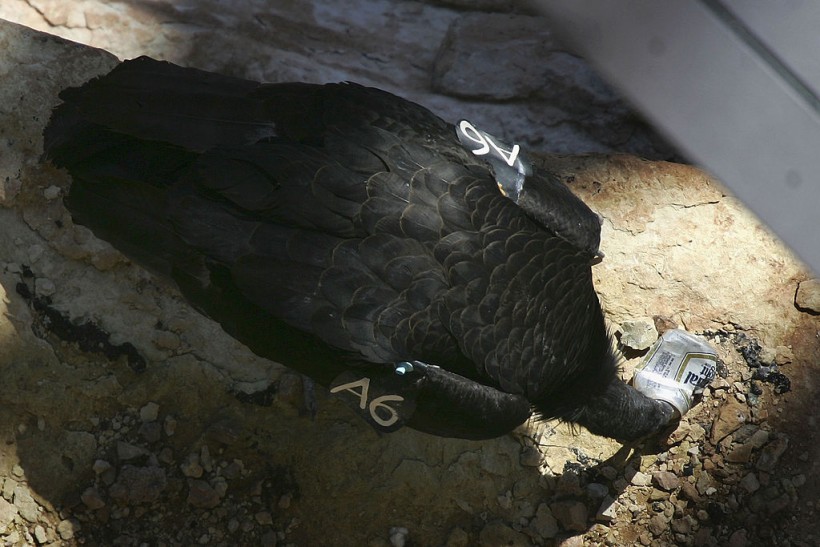(Photo : Photo by David McNew/Getty Images)
A 'bird party' of rare giant condors trashed Cinda Mickols' home over the weekend in Tehachapi, Calif.
Seana Quintero, Mickols' daughter, on her twitter post said that there was more than a dozen, about 15-20 of these rare birds in her mom's home, which was 'pretty amazing but also the worst', as these giant birds trashed here mom's deck, ripping up spa covers, knocking over plants and ornaments, tearing screen doors, chewing on every piece of plastic they could find, and pooping everywhere.
There are currently about 160 California condors flying free in Central and Southern California, nearly 80 in Arizona and Utah, and more than 30 in Baja, Mexico. The California Condor Recovery Program led to more California Condors flying free in the wild than in captivity by 2008.
California Condor in its natural habitat
Since the U.S. Fish and Wildlife Service (USFWS) started its California Condor Recovery Program, the population of these birds have grown to more than 440. Due to habitat loss, overhunting and poisoning from hunting ammunition in 1980s, condors have almost reached extinction. Through the recovery program, condors were introduced back to the wild. You could be wondering why these birds have a number attached to them. In the California Condor Recovery Program, an identification number known as the 'studbook number' is assigned to each bird as a way to identify individual birds. This helps biologists to keep track of their medical histories and behavioral patterns.
The agency responded to the event at Mickols' home, saying that her home used to be a historic condor habitat. Fish and Wildlife spokeswoman Pam Bierce said that it was 'not unusual' to see a large group of these birds flocking around in the area as sometimes they perceive houses and decks as suitable perch locations. She also added that a few hundred of Condors now in the wild, after being captive and kept in zoos back then, try to re-colonize parts of their historical range.
Also read: Endangered Kittiwake Birds Try to Reach their Nests and Fail
How the 'Condor shenanigan' was dealt with
Quintero said that her mom was fond with the wealth of wildlife in the area when she moved there, but now has 'gotten more than she bargained for'.
While it looks like the condors have no plan on leaving the house alone yet, they were hoping that the visitors start hanging out at trees, as her mom enjoys watching them out there. Quintero said that according to one of her mom's talk with a condor expert from Fish and Wildlife, 'condors like to ride the updrafts because they're poor fliers and don't flap their wings much'. Known as giant birds, it sure was a lot of effort to keep them up in the air.
Finally, U.S. Fish and Wildlife suggested hazing the birds to prevent them from the trashing the house a lot more. The group advised methods that are not harmful such as use of water hoses, yelling, clapping, shouting or using other preventative measures such as scarecrow sprinklers. Feeding or touching them was discouraged.
Also read: Secrets of Ancient Parrot Mummies Unearthed in Atacama Desert
© 2024 NatureWorldNews.com All rights reserved. Do not reproduce without permission.


![Tsunami Hazard Zones: New US Map Shows Places at Risk of Flooding and Tsunamis Amid Rising Sea Levels [NOAA]](https://1471793142.rsc.cdn77.org/data/thumbs/full/70325/280/157/50/40/tsunami-hazard-zones-new-us-map-shows-places-at-risk-of-flooding-and-tsunamis-amid-rising-sea-levels-noaa.jpg)



